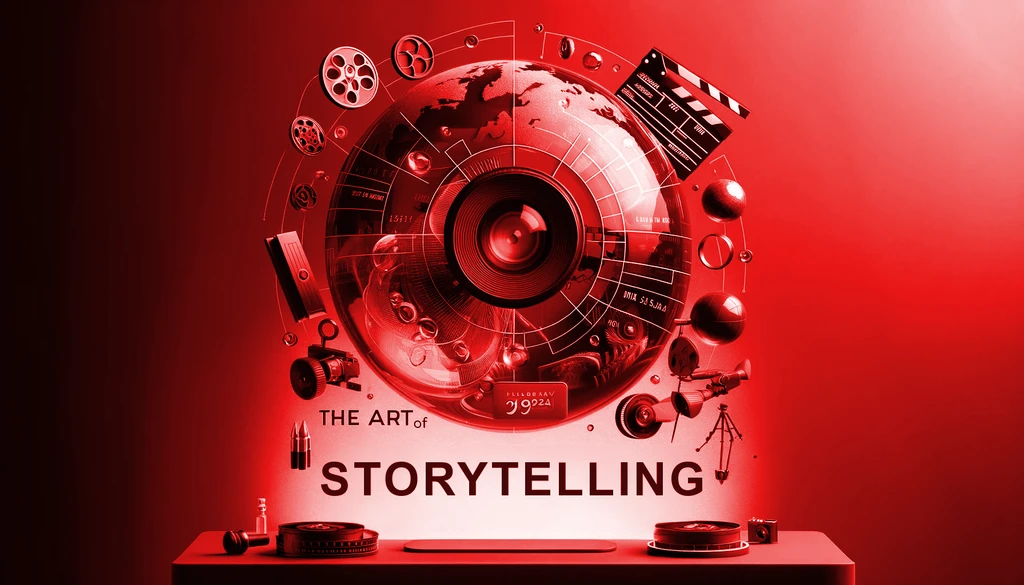The Art of Storytelling: Crafting Compelling Narratives Through Video
In the realm of visual media, storytelling stands as the cornerstone of captivating an audience's attention, stirring emotions, and conveying messages with depth and resonance. Video, with its ability to combine moving images, sound, and narrative structure, offers a powerful medium for storytellers to weave intricate tales that leave a lasting impact.
Understanding the Power of Video in Storytelling
Video as a storytelling medium transcends traditional boundaries, allowing creators to evoke emotions, build connections, and communicate complex ideas effectively. Unlike other forms of communication, video engages multiple senses simultaneously, making it inherently immersive and engaging. From short-form social media content to feature-length documentaries, the versatility of video enables storytellers to tailor their narratives to various platforms and audiences.
Elements of Compelling Narrative in Video
- Character Development: Central to any compelling narrative are well-developed characters that resonate with the audience. Whether it's a protagonist navigating challenges or a real-life persona in a documentary, characters serve as the driving force behind the story's emotional core.
- Plot and Structure: A coherent plot and narrative structure guide the viewer through the story's progression. Beginning with an introduction that sets the scene, followed by rising action that builds tension, climax, and resolution, effective storytelling in video mirrors the classic narrative arc found in literature and theater.
- Visual Composition: Visual elements such as framing, lighting, color palette, and camera movement play pivotal roles in enhancing storytelling. Each shot contributes to the narrative's mood, pacing, and thematic resonance, reinforcing the emotional journey experienced by the viewer.
- Sound and Music: Sound design and music selection are crucial in setting the tone and atmosphere of a video narrative. Dialogue, ambient sounds, and carefully chosen music tracks can evoke specific emotions, heighten suspense, or underscore pivotal moments within the story.
Techniques for Crafting Compelling Video Narratives
- Pre-Production Planning: A well-thought-out script or storyboard serves as the blueprint for a successful video production. Pre-production involves defining the story's goals, identifying key messages, and planning the logistical aspects of filming to ensure a cohesive and effective narrative.
- Cinematic Techniques: Incorporating cinematic techniques such as close-ups, establishing shots, and visual metaphors enhances storytelling by providing visual context, emphasizing important details, and guiding the viewer's attention.
- Editing and Post-Production: The editing process refines the raw footage into a polished narrative. Through careful selection of shots, pacing adjustments, and seamless transitions, editors shape the story's rhythm and emotional impact, ensuring coherence and clarity.
- Authenticity and Emotion: Authentic storytelling resonates with audiences on a personal level. Whether portraying real-life experiences or fictional scenarios, capturing genuine emotions and human experiences fosters empathy and connection, making the narrative more relatable and memorable.
Case Studies and Examples
- Branded Content: Successful brand storytelling videos often integrate the brand's values and identity into compelling narratives that resonate with their target audience.
- Documentaries: Documentaries leverage the power of real-life storytelling to inform, educate, and inspire viewers while shedding light on diverse perspectives and social issues.
- Short Films and Creative Projects: Short films and creative video projects offer filmmakers the freedom to experiment with storytelling techniques, explore unconventional narratives, and push artistic boundaries.
The Future of Storytelling in Video
As technology advances and audience preferences evolve, the landscape of video storytelling continues to expand. Virtual reality (VR), interactive videos, and immersive experiences present new opportunities for storytellers to engage audiences in innovative ways. However, amidst these advancements, the fundamental principles of compelling storytelling—character, plot, emotion, and authenticity—remain timeless and essential.
Mastering the art of storytelling through video requires a blend of creativity, technical expertise, and a deep understanding of narrative structure and audience engagement. Whether creating content for entertainment, education, or marketing purposes, effective storytelling in video has the power to inspire, educate, and provoke thought, leaving a lasting impression on viewers and driving meaningful connections in an increasingly digital world.






































